Kenya
Off the coastal island of Wasini in Kenya, four men are preparing to dive into the ocean to tend to new plantations of seagrass.
They are members of Wasini Beach Management Unit (BMU), a community-based organisation responsible for managing and ensuring safe and effective use of fishing grounds.
Over the years, this fishing community has witnessed a decline in the fish population.
In the quest to solve the problem, they learnt about seagrass and its importance in promoting marine life.
Most of the seagrass meadow in the area had been destroyed by destructive fishing practices and so the community decided to restore these vital habitats.
The restoration project begins with a careful assessment of degraded areas and the identification of donor sites where healthy seagrass seedlings could be harvested.
The Wasini BMU members knit sisal (natural fibre) bags together, creating large, carpet-like structures in which they plant the seagrass.
Seven metres beneath the ocean surface, the men start by securing the sisal bag on the seabed using hammers.
Once the bags are firmly in place, they carefully puncture holes in the fabric, creating pockets for the seagrass seedlings.
When the seagrass is firmly rooted in the ocean floor, the natural fibres of the sisal bag gradually decompose.
Within a period of 3 to 4 months, new leaves begin to sprout from the established seedlings.
Abubakar Omar, a member of Wasini BMU, depends on the ocean for his livelihood.
He is a father of six children and dwindling fish stocks left him struggling to provide for his family.
“Before we learnt about seagrass restoration, I would only harvest about two kilograms of fish, which was not enough to feed my six children,” he says.
However, since implementing seagrass restoration efforts, his catch has increased to as much as 60 kilograms in a single day.
“After we learnt about seagrass restoration, the harvest is plentiful,” he adds.
This abundance has not only improved his earnings but also attracted buyers from Mombassa over 100 killometres away says Omar:
"Now people travel all the way from Mombasa to Wasini to buy fish."
In the past unsustainable fishing methods such as the use of destructive seine nets significantly contributed to the loss of seagrass habitats.
"Most of the seagrass areas were destroyed in the past due to harmful fishing techniques,” says Ahmed Mohammed Abubakar, another Wasini BMU member.
Acknowledging their past mistakes, the BMU took the initiative to educate the community on the dangers of harmful fishing practices.
“We decided to first fight against harmful fishing methods through educating and sensitizing the community," says Mohammed Abubakar.
After planting, the members monitor the seagrass growth every two weeks.
During these assessments, they record the progress of the seagrass, ensuring it grows healthily.
Additionally, they collect trash and clean any algae that may accumulate on the seagrass, helping to maintain a healthy environment for the young plants to thrive.
Seagrass is threatened by species such as sea urchins, plus coastal developments, pollution, seaweed and a rise in sea levels.
The Wasini BMU initiated its seagrass restoration efforts in 2014 after receiving training from the Kenya Marine and Fisheries Research Institute (KMFRI).
In 2019, the Coastal Development Authority (CDA) further supported their efforts by providing additional resources, helping the BMU upscale their restoration initiatives.
The BMU has restored 2.5 acres of seagrass meadows and it's planted at least 10,000 seagrass seedlings.
“The more we address degradation and rehabilitation, we are actually supporting the community per say, so all these rehabilitation efforts, whether in seagrass, whether in mangroves, whether in coral reefs are actually uplifting the lives of the community,” says Geoffrey Rono, Director for Research and Strategic Planning at CDA.
A new fishing port in the area is impacting the seagrass meadows according to the BMU.
The Shimoni Port is a project by the Kenya Ports Authority and the local government.
Dredging required for the port's construction could lead to increased sedimentation, which can smother seagrass meadows and disrupt their growth.
The introduction of larger boats associated with the port is likely to cause further damage to the seagrass meadows.
Mohammed Kassim, a member of the Wasini BMU, is concerned that these developments could undermine their hard-won progress in restoring the marine environment.
"We have invested over 200 million (Kenya Shillings, approx $1.5 million) through restoration. I believe the fish port will cause sedimentation at the restoration area because of dredging, the movements of ships will also cause sedimentation,” he says.
“There is also the problem of sound pollution under water," he adds.
Seagrass plays a crucial role in supporting marine life.
It provides breeding grounds for fish, serves as a food source for various marine species and helps counter climate change through carbon sequestration.
"Seagrass are beneficial to the ecosystem in the sense that they are habitats that provide food for fish and other fauna that are associated with seagrass ecosystems. They also provide nursery habitats for small fish where they are able to thrive as well as providing breeding areas for fish and other fauna. They also provide climate regulation services because they are useful in sequestering carbon from the atmosphere and being able to maybe produce oxygen which is important for the animals that live in the water," says Lilian Daudi, Senior Marine Research Scientist in Seagrass Ecology at Kenya Marine and Fisheries Research Institute (KMFRI).




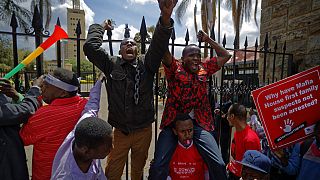

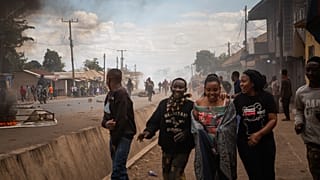
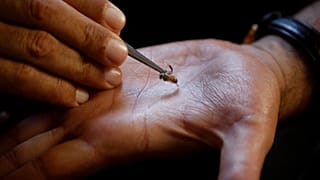
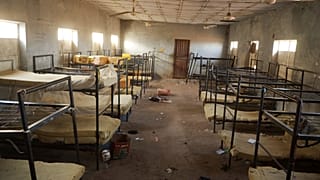
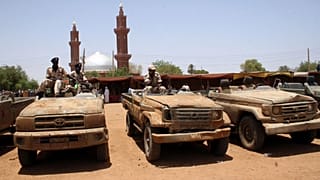

01:11
Algeria sees more than 22 wildfires in 8 provinces as southern winds see temperatures soar
01:13
Ethiopia named as host for 2027 UN Climate Summit
01:06
France leads $2.5 billion push to protect Congo’s forest as climate summit urges action
01:00
Prince William's Earthshot Prize honours global climate innovation projects
Go to video
Kenya’s deadly landslides test the country’s climate readiness
01:09
Landslide leaves at least 26 dead in western Kenya